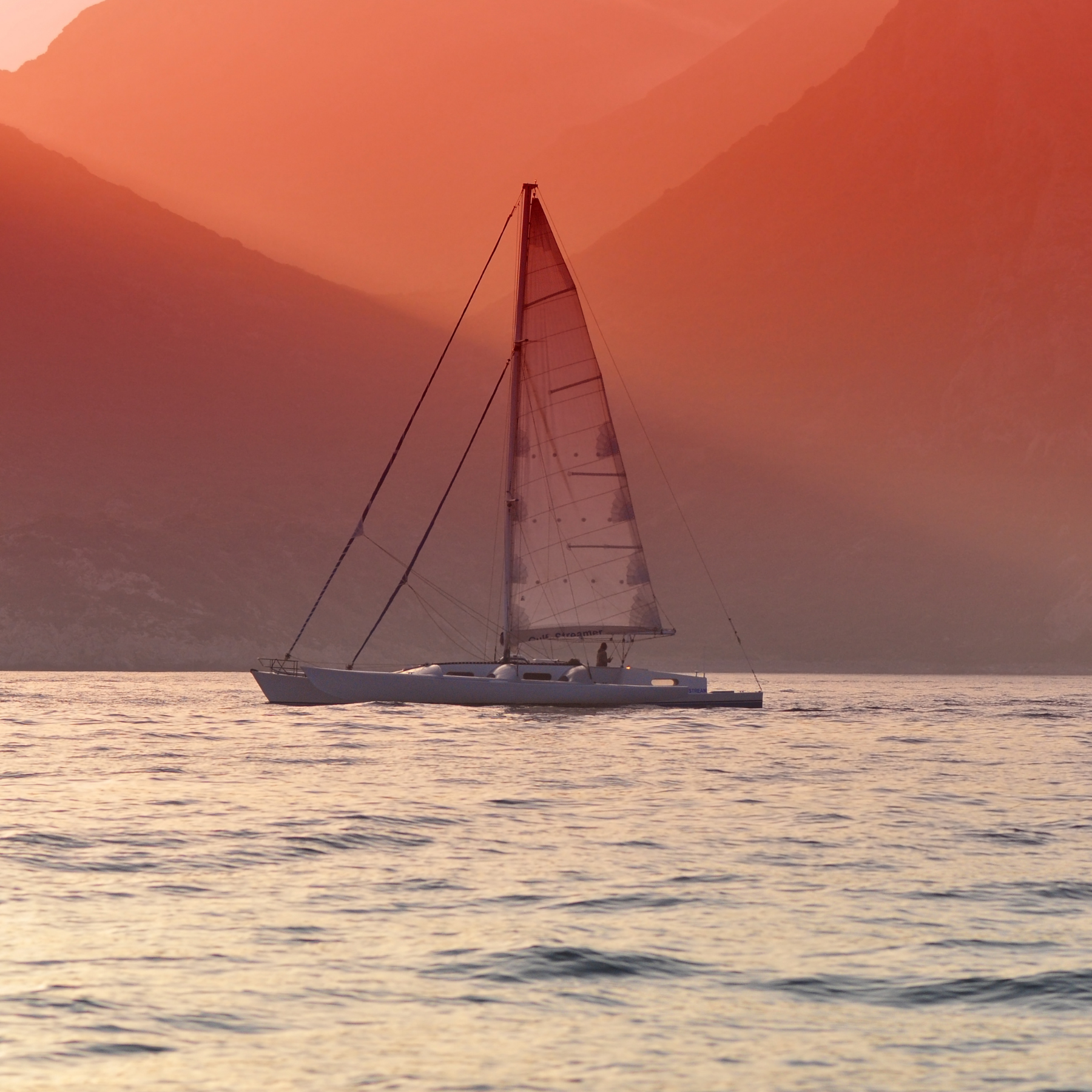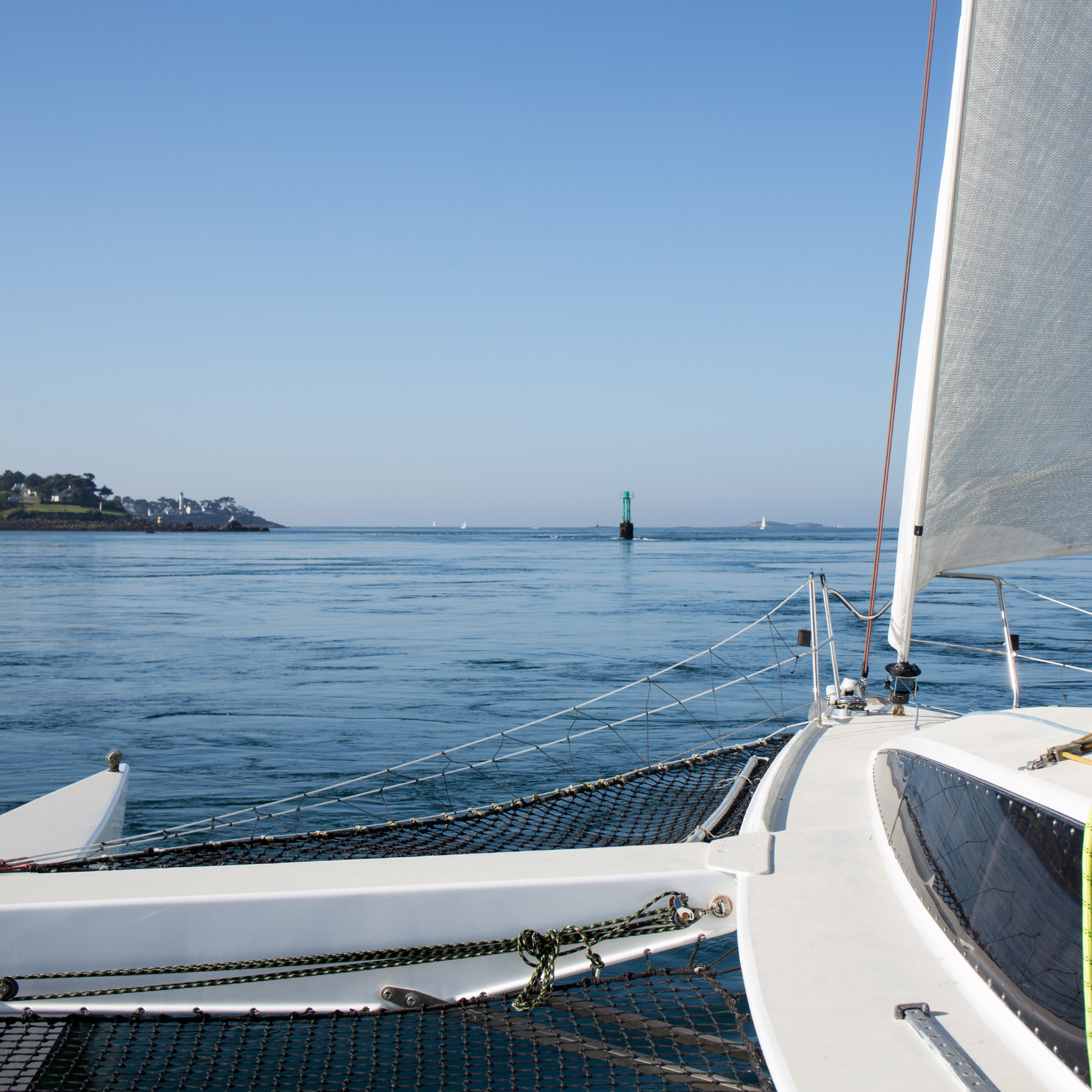TRIMARAN VS CATAMARAN
Trimarans and catamarans have a unique appeal. They are stable, fast, and comfortable. Yet, it can be hard to choose between these kinds of vessels, if you have the budget to charter or buy either.
In this article, we delve into the trimaran vs catamaran debate to establish the pros and cons of both. But first, let’s look at the key differences between them.
What are the differences between trimarans and catamarans?
A trimaran has one main, larger hull flanked by two smaller “floats”, connected by lateral beams. It’s rigged similarly to a monohull and heels. The extra hull offers less hydrodynamic resistance, which makes a trimaran faster.
Catamarans have two equal-sized parallel hulls; their wide beams offer stability. That’s why cats don’t heel.
Catamarans have become extremely popular over the past decades, especially once bigger, more comfortable models have been produced since the 90s. So much so, that there’s a rather long waiting list to get a new one built. Charter companies are purchasing more and more cruising cats to add to their fleets and many cruisers choose a cat over a monohull when they set sail on a long voyage.
Trimarans have been associated with racing only, until recently. However, new and rather spacious recreational models are slowly emerging. Finding a cruising trimaran to charter is still hard, though.
Can a trimaran capsize?
In theory, in extreme conditions, if a wave is higher than half the beam size of the boat, a trimaran can capsize. However, trimarans are rather wide vessels and their three-hull configuration makes them very stable.
A trimaran has a maximum righting moment of 27 degrees of heel, while a catamaran has a 12 degree one. Such a shorter angle can be reached in short seas, if the wind gusts are powerful enough and you haven’t reefed.
So capsizing a trimaran is extremely hard. Plus, if a trimaran flips over, it is virtually unsinkable, thanks to the three hulls. This extra safety element has led to trimarans becoming more popular than catamarans in the racing world.
Is a trimaran safer than a catamaran?
To a small extent. As we have seen above, it’s very difficult to sink a trimaran. The same goes for cats. However, trimarans have the added bonus of being harder to flip over, too.
Get the free DECKEE boating app
DECKEE helps you plan, prepare and explore the waterways with confidence.
Pros and cons of Trimarans
Let’s look at the advantages and disadvantages of trimaran sailboats.
Pros
Trimarans are very fast, typically faster than both cruising and racing catamarans
They can sail in nearly any wind conditions
Trimarans are extra stable and hard to flip over
The heeling allows you to understand when it’s time to reef
Trimarans perform better upwind than cats
The helm offers great feedback, just like on a monohull
The anchoring gear is easier to deploy, as it’s installed on the main hull.
Cons
Sailing a trimaran takes quite a bit of work on deck
They heel, making it harder to cook underway
Trimarans can be harder to maneuvre inside a marina
The space on board is typically less than on most cats
Trimarans are very weight sensitive.
Pros and cons of catamarans
Catamarans, on the other hand, have their own pros and cons.
Pros
Cats offer a stable platform underway and at anchor
Maneuvering a catamaran is very easy
Modern, cruising cats, feature lots of room above and below deck
Catamarans don’t heel
Cruising catamarans can bear a decent amount of load.
Cons
Racing cats aren’t very spacious
Catamarans can be capsize more easily than trimarans
You need to reef more often on a cat
Any catamaran is slower than a trimaran
The helm isn’t very responsive - you need to pay close attention to the instruments.
The verdict: Trimaran or catamaran?
As always, when it comes to boats, there isn’t a “better option”. A vessel needs to be tailored to the needs and preferences of her owner.
If you prefer sailing a beautiful, spacious platform, on which to cruise leisurely and entertain many guests, a cruising catamaran may be the choice for you. You won’t need to handle the lines and halyards quite as often, you won’t heel, but you will travel slower.
If, on the other hand, you enjoy the thrill of high speeds, but you’re worried about safety, a trimaran may be right for you. A recreational trimaran fitted with daggerboards or centreboards can typically sail faster than a catamaran and perform better upwind.
A performance cat may be a great option for those who need to get in and out of marinas often but want to sail fast. And if you want the fastest, most fun boat to sail, opt for a racing trimaran.
Whatever your priorities, a boat that’s the perfect balance between them all exists. Although, of course, you will need to take budget into consideration.
Get the free DECKEE boating app
DECKEE helps you plan, prepare and explore the waterways with confidence.


